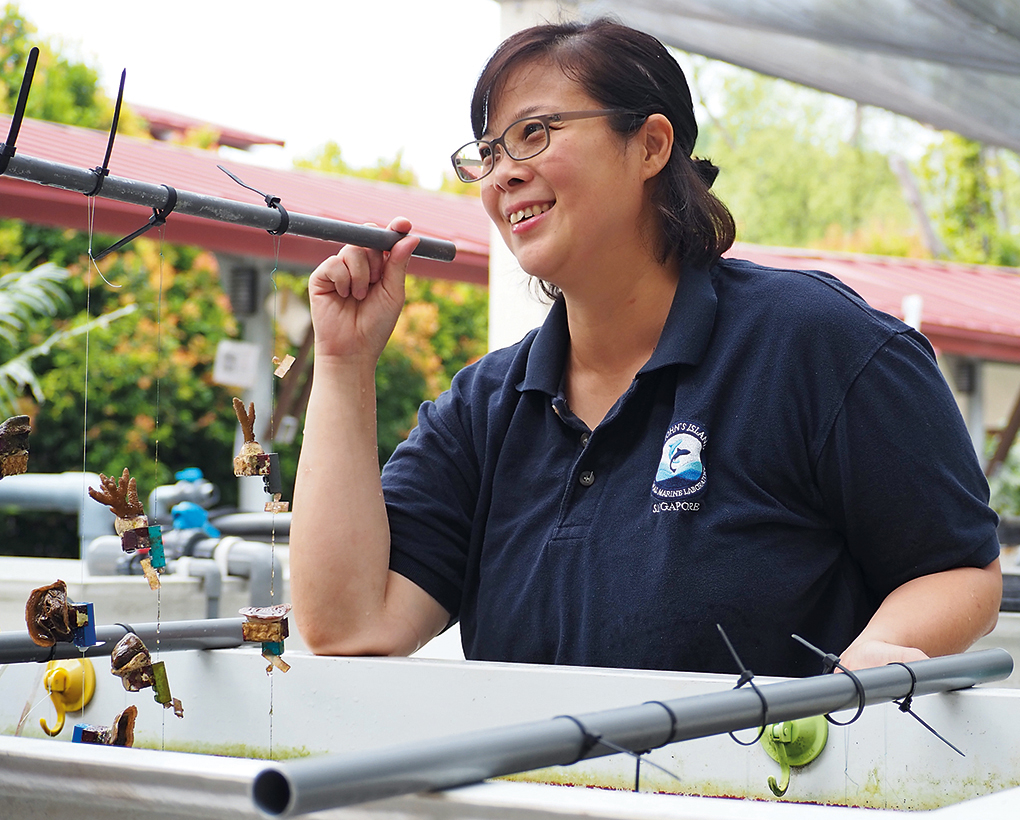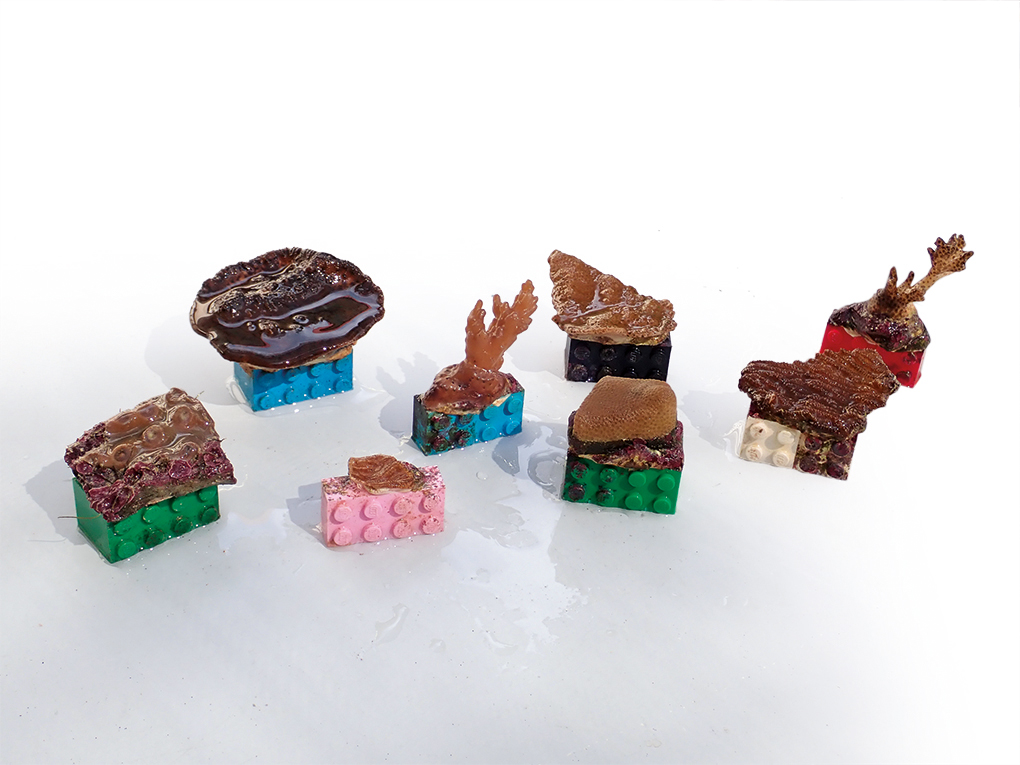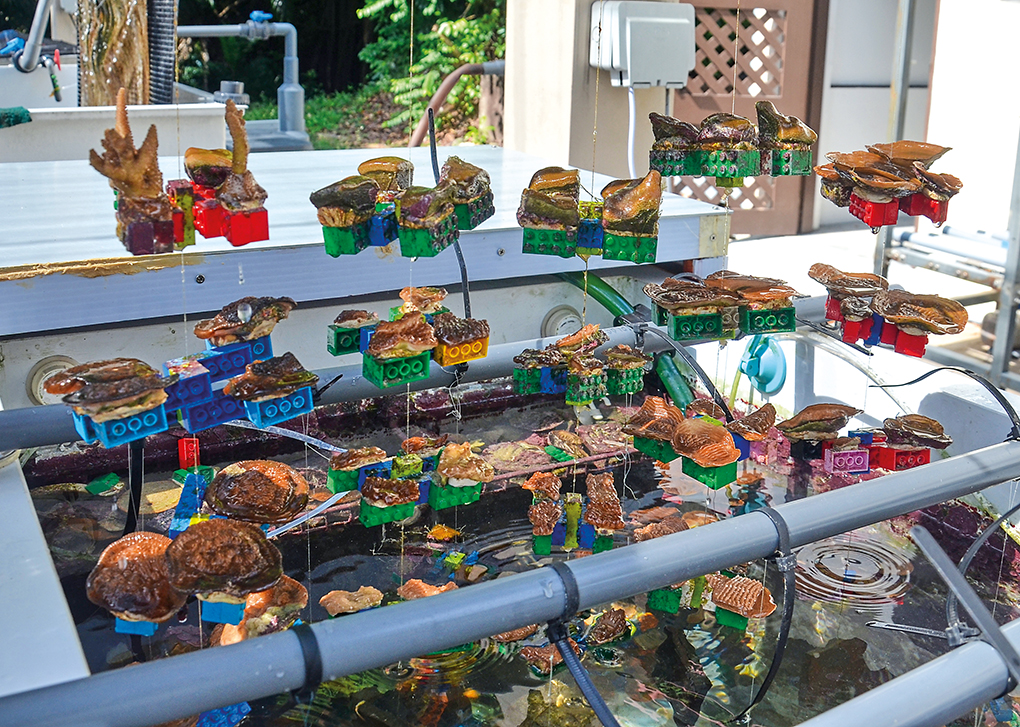
Sometimes the solution to a problem is genuinely child’s play—you just have to find it. Two marine biologists in Singapore were faced with the task of attaching fragments of stony coral and Tridacna giant clams to substrate as part of an initiative to restore reefs around the island city-state on the Malay Peninsula. According to Dr. Neo Mei Lin, a senior marine biologist and senior research fellow at the Tropical Marine Science Institute at the National University of Singapore, they needed to create flat, stable surfaces for corals to colonize. Removable plastic Lego bricks proved to be perfect for keeping the animals in a particular place.
Along with their colleague Dr. Jani Tanzil, they experimented with this idea, as bizarre as it is ingenious, and they report that the results were superb. Their goal was to rehabilitate the damaged reef zones in Singapore’s coastal regions and to attach vegetatively produced coral fragments to natural substrates there. In many places these coral communities had been destroyed or at least massively damaged by decades of land reclamation, coastal development, and harbor activities.
The coral fragments spend their initial growing-on period in the rearing tanks on Lego bricks donated by friends and colleagues. The biologists report that the Lego bricks are very useful for their research and experiments, as they help them to rear small fragments of coral in their aquariums and to secure them wherever necessary. Later on, before the corals are placed on a natural substrate in the sea, the two scientists remove the pieces of plastic to prevent the long-term release of microplastic particles into the sea.

Lego bricks in the reef aquarium?
Lego bricks originated around 1949 in Denmark, based on an earlier British toy known as Kiddicraft Self-Locking Building Bricks (“the original LEGO”). Now the largest toy company in the world, the Lego Group is based in Billund, Denmark, and claims to have produced almost a trillion bricks over the years—with some 80 of the plastic blocks for every person on Earth.
For reef aquarists, who regularly have to “garden” on their living-room reef and prune their stony corals, this raises the question of whether Lego bricks might not be the perfect way to vary the location of their fragments in the rearing tank by placing them on a matching Lego base plate. Corals glued to Lego bricks could initially be placed close together to save space, and subsequently moved further apart on the base plate. In addition, the size of these artificial substrates is enormously variable and can be selected according to the coral genus and fragment size in question.

Even introduction into the aquarium could be simplified with the help of Lego bricks, by gluing a small, shallow, plate-like element firmly to the live rock or the reef ceramic, so that the coral, again on a Lego brick, can subsequently be simply pushed into place. The surface area of the Lego components can be selected according to coral size and the effect of the current. Initially, the coral could be removed effortlessly in order to reposition it, and later the Lego would be overgrown and concealed by the developing basal disk.
Lego lovers with reef aquaria: have fun experimenting! Inventors who disdain plastic: might there be a future for aragonite-based interlocking bricks?
—Daniel Knop,
KORALLE





Great work by all those involved 🙂 It is the collective effort and positivity of groups such as these that will support the future of our reefs.